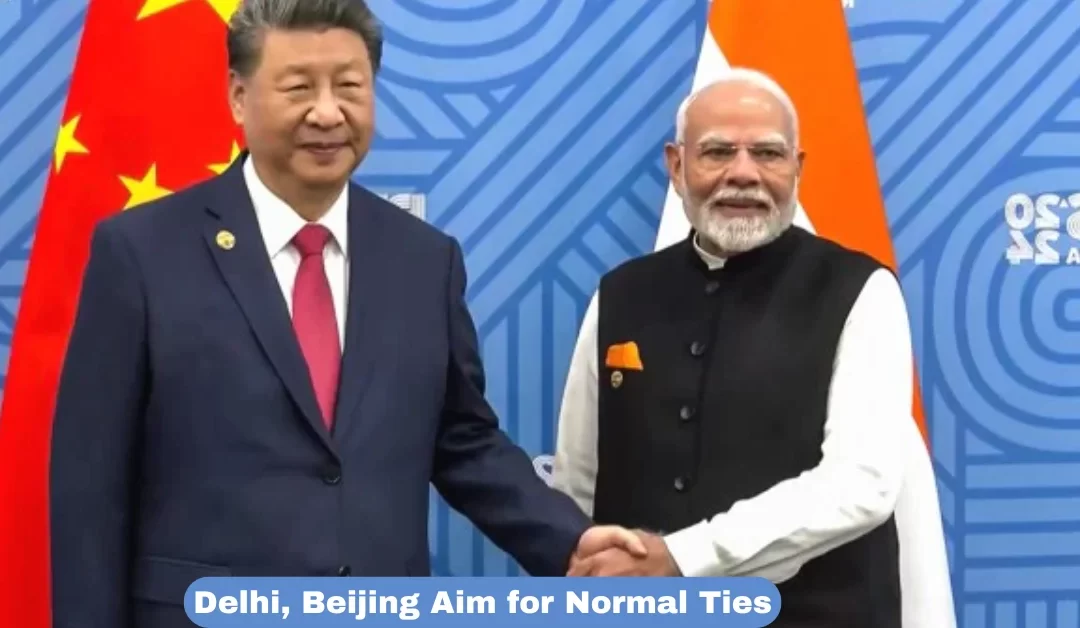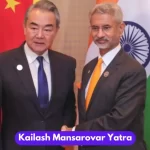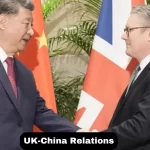China is hopeful that its list of measures, including direct flights and easing visa restrictions, will soon become a reality. These measures aim to improve the relationship between China and India, bringing it back to how it was before the border standoff began in April 2020. The process of normalization between the two Asian giants is crucial for regional stability and their shared economic and strategic interests.
Key Points of Discussion
- Direct Flights and Visa Easing: One of China’s main goals is to restart direct flights between the two countries and make it easier for Chinese nationals, including diplomats and scholars, to get visas for India. The restoration of these travel links would benefit not just official delegations but also business professionals, students, and tourists, fostering better people-to-people connections.
- Cultural and Media Exchange: The wish-list also includes allowing Chinese journalists to report from India and screening more Indian movies in Chinese theaters. This cultural exchange could help build better public perceptions and understanding between the two nations. Encouraging the flow of media content will help dispel misconceptions and create a more balanced narrative about each country in the other’s media.
- Technology and App Ban Lifting: Another important request from China is for India to lift the ban on Chinese mobile apps that were prohibited due to security concerns. Restoring access to these apps would allow Chinese technology companies to re-enter the Indian market, boosting trade and digital connectivity.
Meetings and Diplomatic Engagements
During a recent meeting between Chinese officials and an Indian media delegation—the first such interaction since the border disengagement—it was emphasized that both President Xi Jinping and Prime Minister Narendra Modi share a strong working relationship. This connection was evident during their meeting in Kazan, where both leaders spoke openly and without formal scripts. The candid exchange showed that despite past tensions, there is a willingness on both sides to move forward and focus on mutual benefits.
Chinese officials highlighted that both countries’ leaders have instructed Special Representatives (SRs) and senior officials to advance talks. These discussions could gain momentum at the upcoming G20 summit in Brazil from November 18-19, where both countries will be present. “We have made our proposals, and now the ball is in India’s court,” said one senior Chinese official, indicating China’s openness to dialogue.
Shared Global Outlook
China believes that both nations have common interests in addressing global issues like climate change, artificial intelligence (AI), and green energy. According to a Chinese official, “China and India share a similar perspective on these global challenges. Both countries should support and understand each other to tackle these problems effectively.” By working together on these fronts, China and India can strengthen their roles as influential leaders in the Global South. The two nations’ collaboration on global platforms such as the United Nations and the BRICS group has already shown potential for coordinated action.
Border Issues and Resolution Steps
Although the border issue has been a significant point of tension, Chinese officials stated that this should not be the sole focus of their relationship. The border standoff had cast a long shadow over political ties, but recent positive steps like patrolling along the Line of Actual Control (LAC) signal progress. The ongoing three-step process—disengagement, de-escalation, and troop withdrawal—has seen some success, though more work is needed to ensure long-term stability.
Since April 2020, there have been 20 rounds of commander-level talks to resolve the border issues. While these talks have led to disengagement at some key points, the process has been slow. Chinese officials pointed out that the leaders’ commitment to better relations has given a positive direction to these discussions. The meeting in Kazan showcased the mutual willingness to push forward, as both leaders spoke openly and from the heart, displaying genuine intent to resolve disputes.
Plans for Future Engagements
Looking ahead, China will chair the Shanghai Cooperation Organisation (SCO) summit next year, and Chinese officials expressed hope that PM Modi will attend. “We hope that Prime Minister Modi will visit China for the SCO summit next year,” said a senior Chinese official. This reflects China’s intention to deepen its engagement and foster high-level dialogue. The presence of PM Modi at the summit would symbolize a significant step toward mending bilateral ties and reinforcing cooperation on security and economic issues.
Chinese officials also noted that, due to the COVID-19 pandemic and the border standoff, opportunities for discussions were limited in recent years. These breaks in communication led to misunderstandings fueled by external forces. Renewed dialogues could help overcome these past issues and pave the way for a more cooperative future. The two countries have the potential to become partners in addressing shared challenges, from public health crises to regional security threats.
The Influence of Global Politics
The potential return of former U.S. President Donald Trump was highlighted by Chinese officials as a factor that could complicate international dynamics. The U.S.’s shifting policies could create challenges for both China and India, making it even more important for the two countries to collaborate. “India and China should work together to find solutions to the common challenges confronting them,” noted a Chinese official.
China’s role in contributing to the G20 declaration and its willingness to work with India on global platforms are examples of this cooperative spirit. “We contributed to the G20 declaration and worked with India on that,” a Chinese official said, showcasing China’s intent to foster partnerships rather than rivalries.































